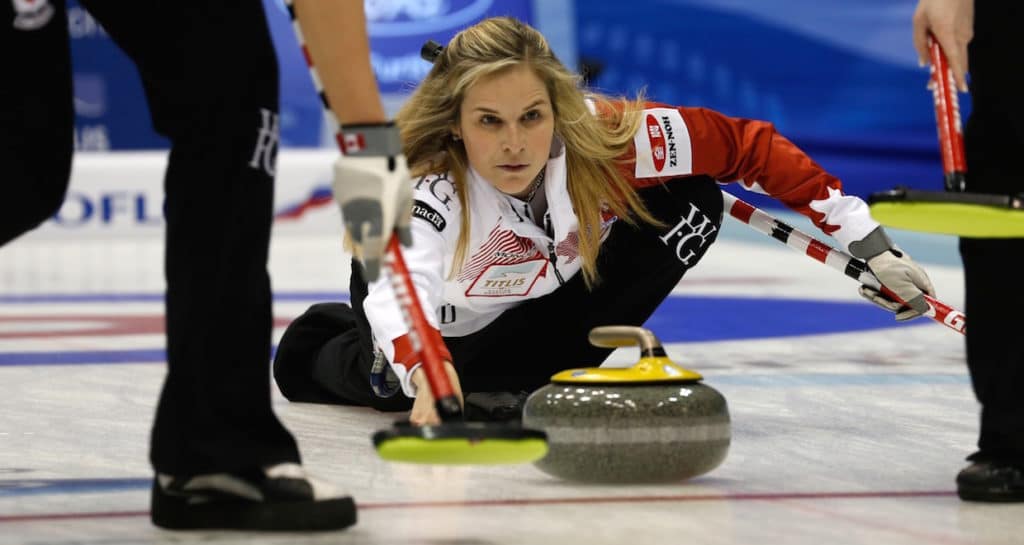Top teams pacing themselves as Tim Hortons Roar of the Rings looms
It seems like every season in a four-year Olympic cycle has its own identity. The first year after the Olympic Games, teams tend to shuffle, adding or subtracting members, and trying to find a line-up that will commit to the long-term goal of representing Canada four years later.
The second year is all about gathering points. World Curling Tour Order of Merit Points transfer directly to the Canadian Team Ranking System, which qualifies you for Grand Slam events, the Home Hardware Canada Cup, and in some cases funding from Curling Canada.
By the third year, points are still paramount, but the berths for the Tim Hortons Roar of the Rings are getting claimed one by one. At the end of Year Three, seven teams of each gender know that they’ve qualified for the big one: a chance to wear the Maple Leaf at the Olympics.
Finally, there’s Year Four, where we sit now. Until the trials roll around, the season doesn’t have much of an identity. Top teams aren’t chasing points all over the country, because they don’t have to. They’ve all scheduled their season around peaking between December 2nd and 10th, and they’ve given themselves some weekends off in the meantime. In past seasons, the busy teams would have played 10 events by then, but in an Olympic year, that number gets knocked down to six or seven.
As a result, there are fewer events with stacked fields. A standard WCT event that would normally have 8 or 12 teams in the top 15, might only get three or four in an Olympic year.
The Colonial Square Ladies Classic, on this weekend at the Nutana Curling Club in Saskatoon, is no exception. While last year, there were 10 Grand Slam-calibre teams in the 24-team field. This year, there are only three in a 16-team field.
Reigning Olympic champions Team Jennifer Jones will be hitting the ice for only their second bonspiel of the season, but will have to go through the new world No. 1 Anna Hasselborg (Sweden) if they want the top prize.
Hasselborg has gained major points this season by making two finals, and losing another semi. Those results have pushed her past Ottawa’s Rachel Homan who failed to qualify in her only event this season. Team Homan is taking another week off from competition, instead running an instructional junior camp at the Ottawa Curling Club.
The only other top-10 team in Saskatoon is Alli Flaxey (Caledon, Ont.). They’ll be playing for a share of $27,000.
Elsewhere, the KW Fall Classic in Waterloo, Ont., hosts 15 women’s teams and 18 men’s teams. Mississauga, Ont.’s Jacqueline Harrison is the top ranked team in a field that also features Coldwater, Ont.’s Sherry Middaugh, and Sudbury, Ont.’s Tracy Fleury.
In Winnipeg, 20 men’s teams are playing for a share of $12,000 at the Mother Club Fall Classic. The field includes two-time Canadian junior and world champion Braden Calvert, Tim Hortons Brier winner Pat Simmons, and Tier-2 Grand Slam winner Jason Gunnlaugson (all playing out of Winnipeg). The 12-team women’s event features Scotties runner-up Michelle Englot, and Grand Slam winner Kerri Einarson.
Finally, in Sherwood Park, Alta., the Service Expert International Mixed Doubles Classic is hosting duos from all over the world. Former Canadian champions Kalynn Park/Charley Thomas and Kim Tuck/Wayne Tuck highlight the field, which also includes Marliese Kasner/Dustin Kalthoff, who represented Canada at the World Championships in 2016. Also in the 24-team competition are Anastasia Bryzgalova/Alexander Krushelnitskiy and Jang Hyeji/Lee KiJeong; Russia and South Korea’s Olympic teams respectively. Top prize is $3,500.





